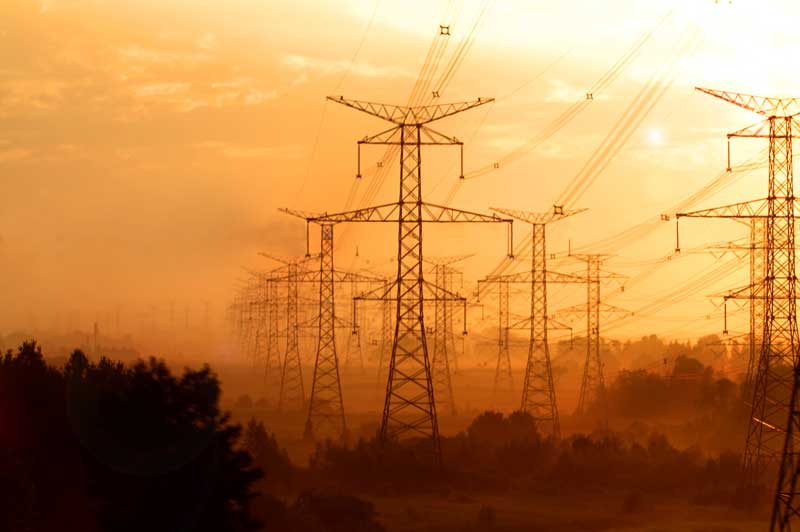The record-breaking temperatures across the globe are not only causing humans to overheat; they’re also short-circuiting an already aging electrical grid in the United States.
The U.S. electrical grid has needed upgrading for some time, but the summer heat acts like a rapidly spreading disease. It’s speeding up the pace for when the grid may need to go on life support.
More simply put, the electrical grid equipment is getting too hot, causing it to break, leading to blackouts for hundreds of Americans.
The continuous heat waves put nearly 70% of Americans in danger of losing power. According to NERC, the entire United States west of the Mississippi River could suffer energy shortages during “extreme conditions.” The New England and Ontario areas are considered at an “elevated” risk of blackouts, NERC said.
Blackouts aren’t just inconvenient; they can be life-threatening. No electricity means no air conditioning or properly stored food and can jeopardize people’s medicines and medical care. It can also mean death.
The average annual heat-related deaths are up 95% in the U.S. from 2010 to 2022, according to the Centers for Disease Control.

A record-breaking summer
Scientists tracked July 2023 as the hottest month on record for the entire planet. The average temperature across the contiguous U.S. last month was 75.7 degrees Fahrenheit (2.1 degrees above average), with July 2023 ranking as the 11th-hottest July in the country’s 129-year climate record, according to the National Oceanic and Atmospheric Administration.
“The extreme weather which has affected many millions of people in July is, unfortunately, the harsh reality of climate change and a foretaste of the future,” World Meteorological Organization’s Secretary-General Petteri Taalas said in a statement. “The need to reduce greenhouse gas emissions is more urgent than ever before. Climate action is not a luxury but a must.”
How can utility companies quickly stop the aging of the grid?
The renovation required to completely replace and upgrade the grid is astronomical. A more economical and quicker answer? Solar power.
“I think what we’ve learned is that solar can be a particularly reliable resource during these summer heat waves when you’d expect the sun to be shining,” said Lauren Shwisberg, a principal in the carbon-free electricity program for the energy think tank RMI.
According to data from the Electric Reliability Council of Texas (ERCOT), renewable resources provided an average of 30% of electricity during the peak 10% of demand hours between June 19 and June 30. This means that places like Texas, a state that’s suffering among the worst from the heatwaves, are not adequately utilizing solar power resources.
Solar and wind aren’t perfect because the weather conditions can hinder the renewable sources’ ability to generate as much electricity as needed to truly fuel the entire grid.
“The intermittent nature of wind power (wind turbines only generate electricity if the wind is blowing, and how much electricity they generate depends on how windy it is) present operational challenges for grid operators,” analysts from the U.S. Energy Information Administration wrote in a report this summer. “Low wind and high demand periods could result in energy emergencies.”
How utility companies can use data to help avoid blackouts
Data can help utility companies analyze peak usage times as well as the temperatures that tend to cause blackouts. If a company knows the lines using energy from coal plants might overheat soon, it could re-direct power or switch to solar to try and cool down the grid.
Utility companies can also learn from Texas and try to maximize the power renewable sources generate and ensure it doesn’t go to waste.
- 87% of Utilities Have Experienced at Least One Data Breach in Last Three Years - February 5, 2024
- Can Drones Lower Your Next Utility Bill? - January 10, 2024
- Onshore Wind Farms Are The Next Big Thing In Renewable Energy - December 6, 2023





